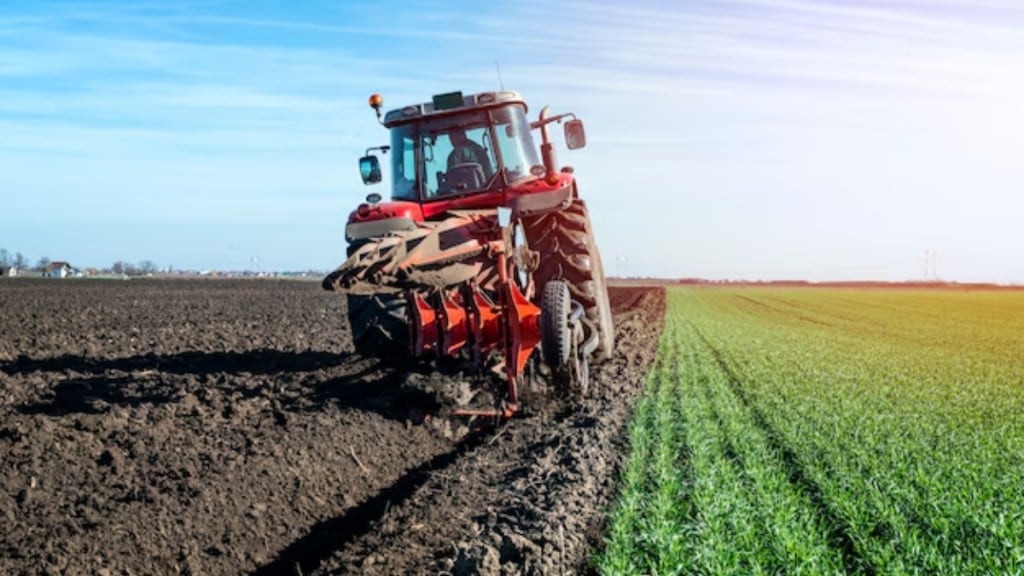By Ashok Gulati and Raya Das
The big question for agriculture in the Union Budget for FY26 is whether it can bring climate resilience and augment the productivity and incomes of farmers and farm labourers. Several new initiatives were announced that are likely to help the farming community. A special focus on 100 districts to augment agri-productivity, promote sustainable farming practices and crop diversification, extending credit access through Kisan Credit Cards from `3 lakh to `5 lakh, starting a Pulses Mission for attaining aatmanirbharta (self-reliance) in tur, moong, and urad, etc., are all steps in the right direction, and so is the setting up of a makhana board in Bihar. But how far will they go in achieving the objectives? Only time will tell. Right now, some Budget numbers may indicate whether these schemes can deliver.
The Budget allocated for agriculture, farmers’ welfare, as well as allied sectors combined is `1.49 lakh crore. This marks a roughly 4% increase over the previous year’s allocation. If the inflation hovers between 4 and 5% in FY26, the real value of this figure may shrink a bit compared to last year. The biggest scheme under the agriculture ministry is that of PM-Kisan, which has been flat at `60,000 crore since 2019. In real terms, it has been declining. The opportunity to dovetail this income transfer with the direct transfer of fertiliser subsidy, which is bigger than the budget of the ministry, is lost. Fertiliser reforms remain an unfinished agenda.
So, the real question is whether this amount is sufficient to tackle some of the structural problems of agriculture. While agriculture’s share in overall GDP has been declining over the decades, reaching approximately 17.7% in recent years, its share in the workforce, after a secular decline, reversed, and increased from 42.5% in 2018-19 to 46.1% in FY24 (Periodic Labour Force Survey). This has depressed the real wages in farming, where 55% employment is of farm labourers, who are at the bottom of the economic pyramid. This reverse trend underscores the inability of non-agricultural sectors in urban India to absorb this surplus labour. The Economic Survey rightly emphasised the promotion of labour-intensive sectors with skill upgrade so that their productivity and incomes improve. So far, the organised manufacturing sector has gone in for more capital-intensive choices than labour-intensive ones. Deregulating the micro, small, and medium enterprise (MSME) sector is one way to move forward as they create the bulk of employment after agriculture.
The Budget emphasis releasing 109 high-yielding, climate-resilient varieties of 32 field and horticulture crops is a welcome move. However, without adequate investment in research and development (R&D) and extension, productivity gains may not translate into higher farm incomes. There is only a marginal increase in the expenditure on R&D in the FY26 Budget over the revised estimates of FY25. This is way below the 1% mark of agri-GDP that is considered essential for sustainable growth of agriculture in the face of climate change. India is hovering at less than 0.5%.
Marketing high-value crops remains a challenge given the fragmented value chain, resulting in around 30% of farmers’ share in the consumer rupee for fruits and vegetables. The Mission for Vegetables and Fruits, with a `500 crore allocation, aims to enhance production, strengthen supply chains, and boost processing to ensure farmers receive remunerative prices — offering some potential, if effectively implemented. But the allocation is a paltry sum while the requirement is huge. What is needed is focused attention on fruits and vegetables as was given to milk under Operation Flood. The current programmes and allocations lack that vision, and hence the problems will linger. Strengthening the National Agriculture Market and integrating it with the Open Network for Digital Commerce platform could improve price discovery, reduce middlemen inefficiencies, and give farmers better market access. But logistical bottlenecks and inadequate processing facilities continue to limit its impact.
Agriculture’s challenges are deeply intertwined with global price dynamics. India continues to face shortages in pulses, oilseeds, and key raw materials for agri-processing industries like cotton and maize, leading to rising import dependence. The Budget does little to address these shortages in a structural manner. Expanding the area under pulses in rice-fallow regions and incentivising private-sector participation in oilseed production could help bridge this gap. But the persisting structural challenge is that farming in India is still heavily dependent on rice and wheat, largely due to minimum support price-centric procurement policies that crowd out high-value crops such as pulses, oilseeds, and horticulture. A shift to a crop-neutral incentive structure is imperative to drive sustainable diversification.
Post-harvest losses remain a significant issue. Around 8.1% for fruits and 7.3% for vegetables are lost in the post-harvest value-chain, amounting to 37% of the post-harvest losses of `1.53 lakh crore annually. Higher investments in cold chains, processing facilities, and logistics are imperative to reduce such losses. Despite efforts to expand warehousing and cold storage infrastructure under various schemes, a significant portion of perishable produce is wasted due to inadequate processing capacity. The government has taken steps to encourage private investment in storage and marketing infrastructure, but more needs to be done. The allocation under the Agriculture Infrastructure Fund has risen from `600 crore in FY25 to `900 crore in FY26, which can improve the post-harvest value chain.
While the FY26 Budget makes some progress in addressing agricultural challenges, the overall approach remains incremental rather than transformational. A paradigm shift is needed — one that moves away from subsidy-heavy interventions to investment-driven growth, greater private sector participation, and technology-led efficiency improvements. The path to making agriculture more resilient and globally competitive requires bold reforms in subsidy rationalisation, infrastructure development, and market linkages. Only then can India achieve the goal of Viksit Bharat and position itself as an agricultural powerhouse by 2047.
The writers are respectively distinguished professor and research fellow at ICRIER.
Disclaimer: Views expressed are personal and do not reflect the official position or policy of FinancialExpress.com. Reproducing this content without permission is prohibited.
